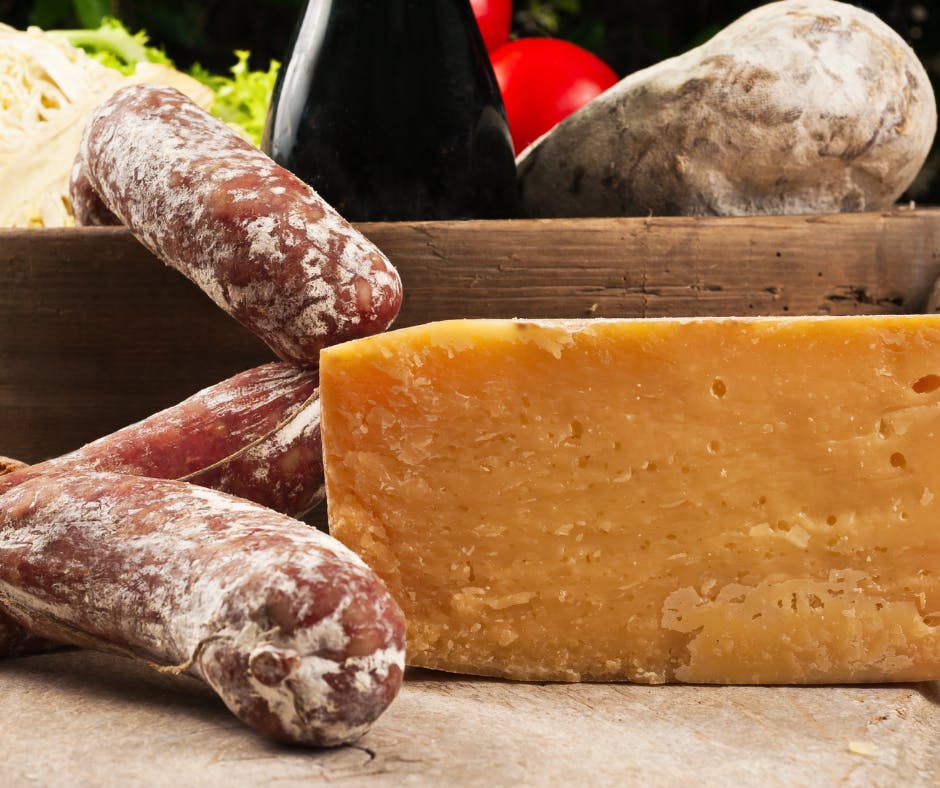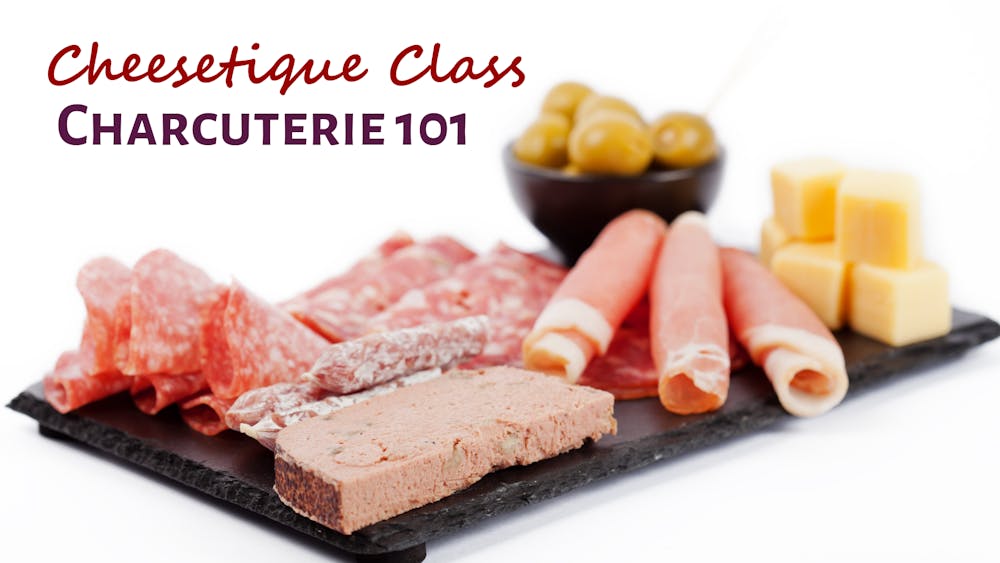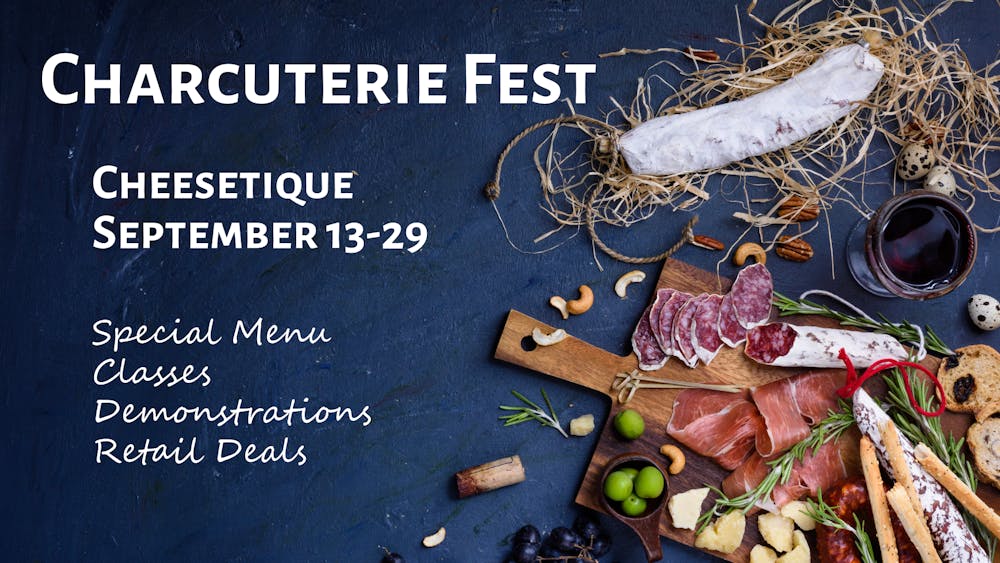A Cheese & Meat Love Story

Cheese and salami are two of my favorite foods, not only because they are both fatty and delicious, but because even though one is made from milk and the other meat, their origins, preparation, components, and variety are amazingly similar.
1. Origins: Cheese and salami were born out of a need to preserve highly perishable ingredients so people didn’t starve to death in the winter. Let me repeat: SO PEOPLE DIDN’T STARVE TO DEATH IN THE WINTER. How hard-core is that?
2. Preparation: Both are prepared by manipulating raw ingredients, adding salt, and storing in precise conditions for long periods of time. Both become more interesting as they age, developing complex flavors and supple textures. The true miracle of aging, though, is that the product is preserved (and improved) over weeks or months without rotting. (Because rotten food = starve to death in the winter, kapish?)
3. Components: Cheese and salami both rely on their skins to survive. Cheese skin is called a “rind” and salami skin is called a “casing.” The rind/casing protects the cheese/salami from drying out or getting unwanted stuff in it. Salami casing is often a section of animal intestine, but can also be synthetic. Happily for all of you vegetarians out there, the rind of a cheese is never an intestine (it’s usually just more cheese). Rinds and casings are almost always edible, but some choose to remove them before eating (wimps).
4. Variety: The multiple steps involved in preparing and aging cheese and salami can vary in myriad ways, resulting in thousands of different salamis from all over the world mainly from the same basic ingredients. Most are pork, but you will also find duck salami, venison salami, and even wild boar salami (tusks not included).
Cool Salami Fact #1: Along with Prosciutto and other hams, salami is a member of the “cured meat” family. Just like your relatives, the cured meat family is full of different personalities. Unlike your relatives, however, cured meats are always fun to be around—and they never ask to borrow money.
Cool Salami Fact #2: Salami comes in all shapes and sizes. It is best served sliced (thick or thin) and you can dab on a bit of mustard if you like.
Cool Salami Fact #3: The fine white powder on the outside of salami’s casing is mold. Yes, mold. Get over it.
So, now that the lesson is over, go forth and indulge in two of the most miraculous foods on earth. I personally guarantee that you won’t starve to death in the winter.
Haven't had enough charcuterie? Join us this month for...


